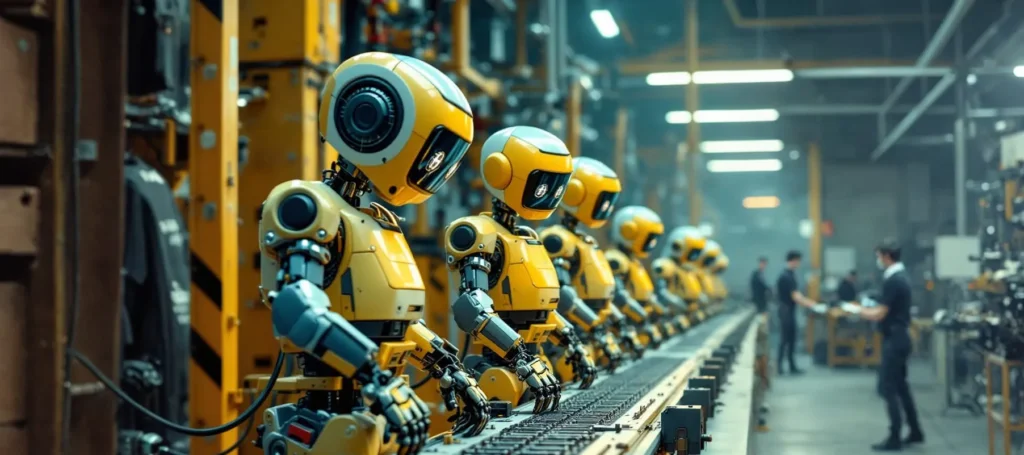Positioned as the bridge between broadcast television and Internet-based video on demand, smart TV was intended to revolutionize the consumer electronics industry. It was supposed to open the door to a new scope of home entertainment, bringing families together and encouraging consumer engagement with online services. However, despite the fact that global smart TV shipments grew 55% to reach 76 million units in 2013, only half of smart TV owners in Europe and the US are actually using their TV’s Internet capabilities, according to Strategy Analytics. The potential of smart TV is there but it’s not being realized, and standardization (or lack thereof) is to blame.
The Failed Promise of Smart TV
Smart TV promised to reinvent the wheel when it comes to accessing online content, but it has fallen short. Given the modern approach to accessing internet-based content this is hardly surprising. As a society we are permanently attached to smartphones and tablets and have grown to expect instant access, which over-the-top (OTT) players, those that deliver audio, video and other media over the Internet, have been quick to provide. Thanks to a combination of video on demand services like Netflix and HBO Go, and the rise of streaming sticks such as the Chromecast and Fire TV, today’s viewers have the power to choose, play, pause, and stop what they’re watching to fit around their daily lives. Linear TV is out, catch up is in, and the nature of video consumption has evolved.
Yet while OTT content can, and often is, accessed on second screen devices, this shouldn’t spell the end for traditional TV sets. Indeed, according to eMarketer, US adults still spend more time watching their TV than on any other platforms, with adults watching video on their TV for 3 hours and 33 minutes a day compared to just 55 minutes on other devices in 2014. With a smart TV, consumers can easily access the same internet-based video and enjoy the added benefit of the big screen, lean back experience that they have come to expect in their living room.
However, when it comes to online services and gaming, consumers typically use their smartphone or tablet. To address this, many manufacturers are looking to add new applications and services to make their platforms more compelling. One of the major challenges, however, is that there is little standardization between different TV operating systems—unlike mobile devices, which tend to fall either into the iOS or Android camp. Given this disparity, creating compelling apps is particularly challenging. Many users want to be able to access the same services on their TV as they do on their mobile devices, yet these apps are largely created by third party developers who are not drawn to the TV platform in the same way as they are to mobile.
Smart TV promised to reinvent the wheel for accessing online content, but has fallen short
Mobile offers developers a large audience for their apps, with iOS and Android both running on a large number of devices. Furthermore, the quality of the user experience on these devices means that potential users are more likely to download and use these apps. When it comes to TV however, there are countless development environments which immediately restricts the number of potential users, unless multiple versions are created which all adds to the development cost. Making matters worse, most smart TVs still rely on outdated and clunky user interfaces meaning that even fewer viewers will actually bother to find, download and use apps via their TV.
Overcoming the App Dilemma
To ensure smart TV lives up its promises, manufacturers need to do two things: Address the issue of standardization across the board, and ensure the user experience of their products matches that of a mobile device.
Rather than relying on proprietary platforms, TV operators and smart TV manufacturers should instead look to virtualization and cloud-based platforms that could provide a much needed boost, giving them the tools they need to grow their ecosystem and re-deploy existing apps to provide a wide range of services. This is especially important given that many TV operators are now, out of necessity, making their content available online and giving consumers the power to watch what they want, when they want, and on any device they choose.
It is necessary to ensure that the TV does not become completely redundant and that viewers continue to engage with content through their TV. A key part of this will be offering new products, games, and add-on services to entice users to the platform.
The shortest route to achieve this is through the cloud. TV manufacturers and operators have the benefit of the big screen. This coupled with a simple “thin client” platform that can be supported by a cloud server on the backend, has the potential to dramatically change the living room experience. With complex processing run though the operator’s servers rather than over the consumer’s hardware, there will be no need to tailor content delivery, including video, games, apps and other online services, to meet specific hardware requirements, making the smart TV a lot more appealing to app developers wishing to reach a large audience.
While the cloud can help address the issue of standardization, the challenge remains of how to make these services easier to navigate. If the smart TV is to gain a real foothold in the connected home, manufacturers need to make vast improvements to the user experience. It goes without saying that consumers naturally gravitate towards the platform that is easiest to use. It’s no surprise that consumers are choosing these second screens for online services and gaming, and there have therefore been fewer uptakes of these services on TV. Yet it need not be this way.
It’s All About the Interface
If we look at how consumers use other internet-enabled technologies like smartphones and tablets, they largely owe their success to the intuitive touch screen interface. The smart TV on the other hand is plagued by navigational issues which are largely down to the archaic remote control and up-down-left-right (UDLR) user interface that is so often bundled with these units or poor implementations of relative pointing remotes, which allow users to point and select onscreen but do not come close to the intuitiveness of the tablet’s touch screen.
While it is no longer practical to create a remote with a button for every function—as this makes accessing content on the TV a laborious process—many manufacturers still choose to do so or for cost reasons opt for pointing based on relative coordinates resulting in a more interactive experience but one that still labor intensive as users must navigate through many screens to reach their desired content. This is despite the fact that the results of NPD’s recent Connected TV User Experience report found that ease of use features amounted to four of the top ten desired consumer changes when it comes to TV. One of those suggestions was for a better, more intuitive remote control, and another was to make it easier to navigate smart TV apps.
Conclusion
There is clearly a demand for a better user experience and for interactive services on smart TVs, but with most current models there is no capacity for accurate pointing or gesture control. This makes it tedious enough to perform a simple task like selecting a TV show through the EPG, so it’s hardly surprising that uptake of more advanced functions like downloading apps, browsing the internet and playing games is so low. If TV manufacturers and operators can get it right, they could entice users back to their platform, not only to view video content but also for other services, making the TV the device of choice in the home.







